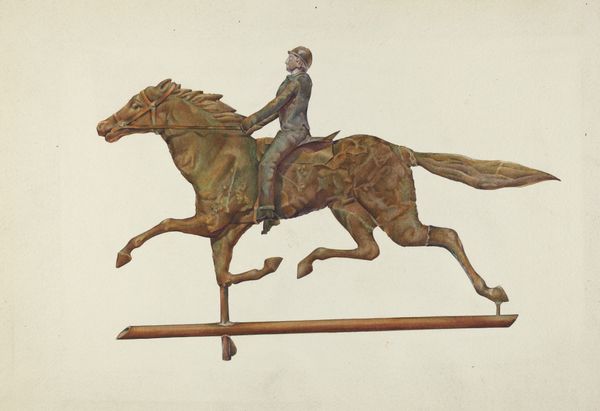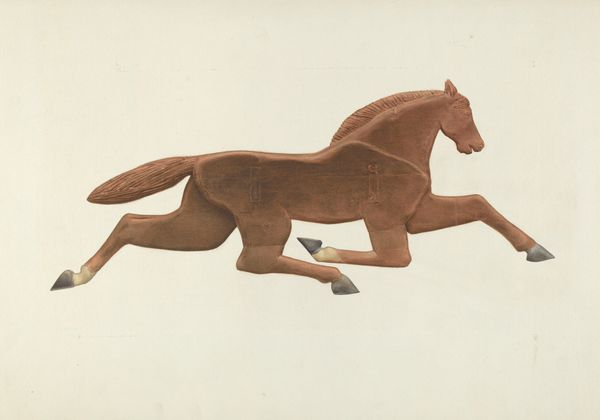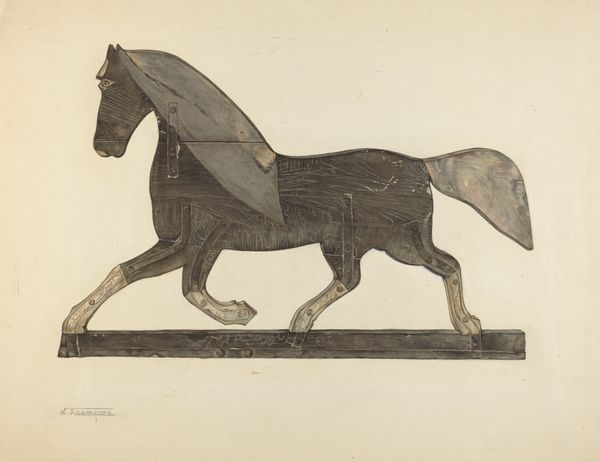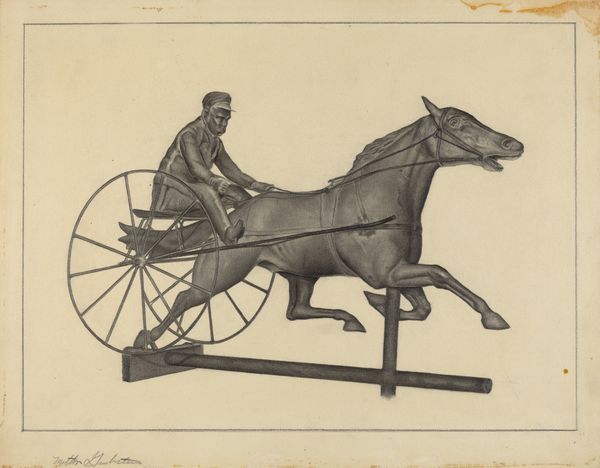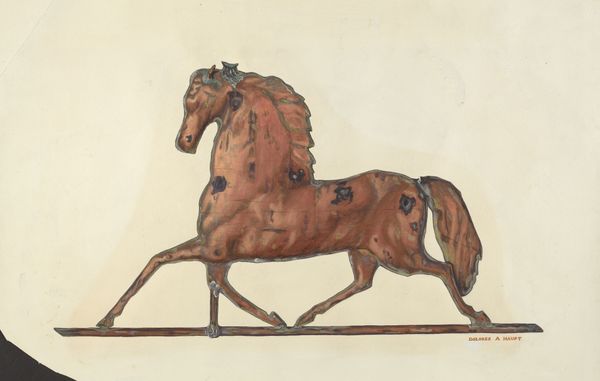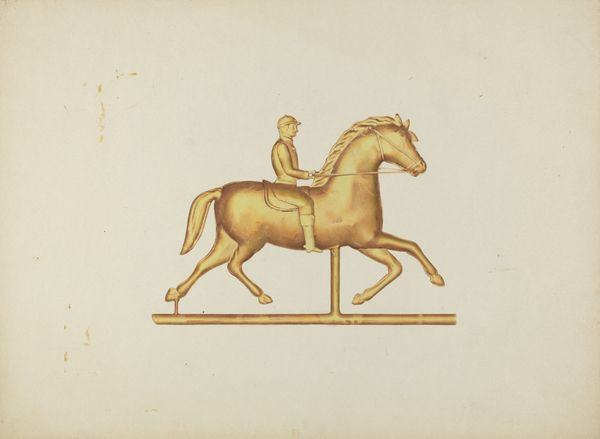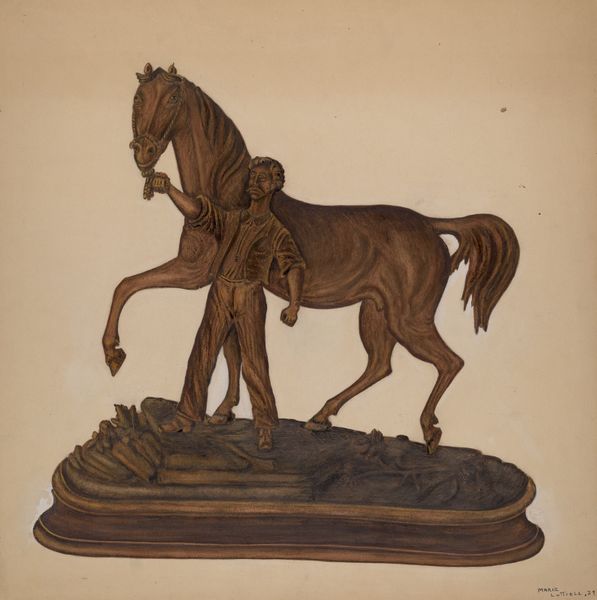
Dimensions: overall: 35 x 45 cm (13 3/4 x 17 11/16 in.) Original IAD Object: 31 1/2" long; 18 1/2" high
Copyright: National Gallery of Art: CC0 1.0
Editor: This is Helen Hobart's "Weather Vane Finial" from around 1938, mixing drawing with metal sculpture. The piece has a distinct vintage charm. The patina on the metal gives it an aged feel. What stands out to you about its construction and form? Curator: The compelling aspect of this piece lies in the dynamic tension Hobart achieves between two-dimensional representation and three-dimensional form. Observe how the drawing's lines capture the essential energy of the horse and jockey, almost a blueprint, a precursor for the more weighty metal form. Note also the stark contrast in material--the lightness of the drawing supporting the density of metal, it’s a striking material contrast. What feeling does that convey? Editor: It makes me think about motion and stability. The sculpture looks caught in a gallop, but also firmly planted. How does its function as a weather vane contribute to its artistic meaning? Curator: Indeed, it invites multiple readings of time and location. It speaks of change but stays rigidly in its north/south/east/west orientation. Its effectiveness relies less on naturalistic observation than on abstract articulation of aerodynamic function. The stylized anatomy serves the symbolic and practical roles of guiding weather readers. Hobart's skillful blend of medium and function adds another layer to its narrative power. Editor: So it's the merging of the physical object and its intended function, creating something new. Thank you, this has completely changed my perspective. Curator: Exactly. Analyzing the artist’s choices through a structuralist lens reveals complex interplay and interdependencies of signifiers, where artistic agency blends into a dance between the natural and artificial, intention and perception.
Comments
No comments
Be the first to comment and join the conversation on the ultimate creative platform.
